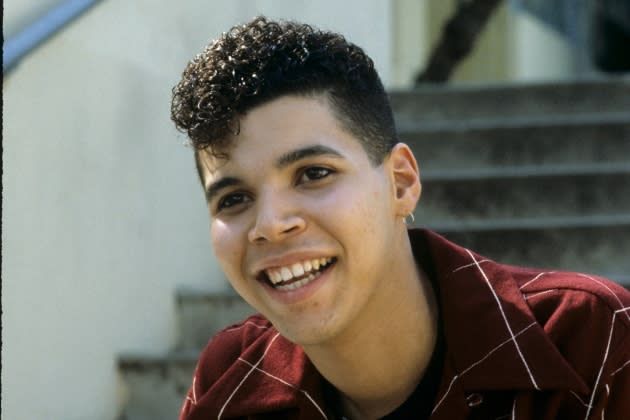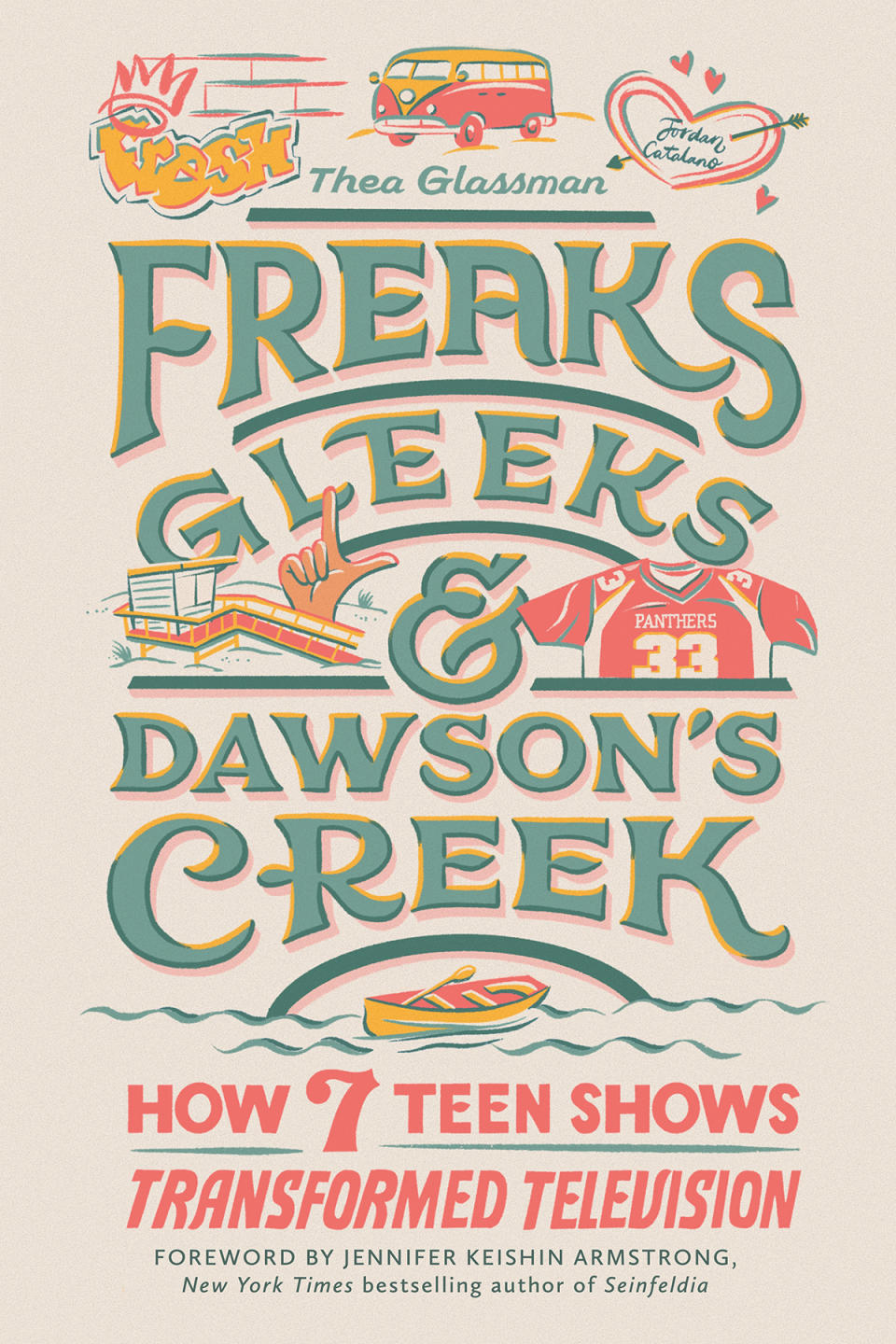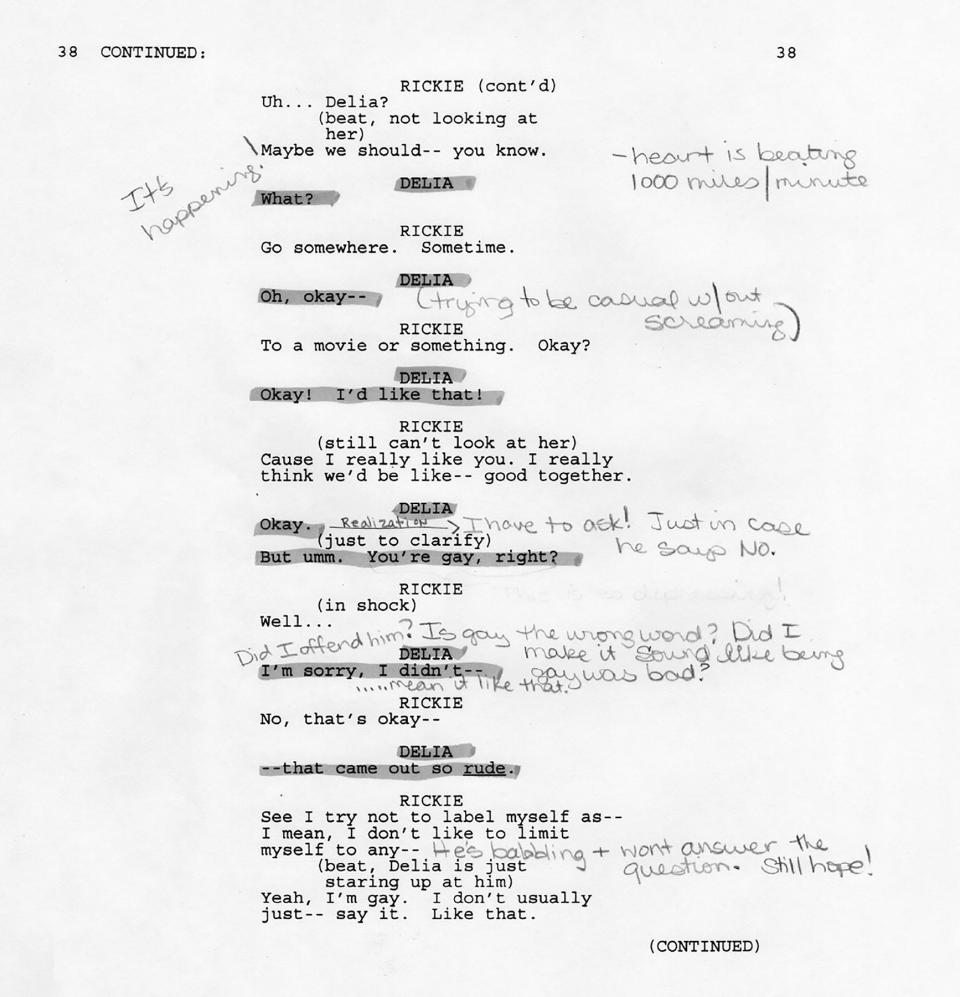‘My So-Called Life’ and the Coming-Out Scene That Changed TV History
- Oops!Something went wrong.Please try again later.

About a week before the finale, the Washington Post ran its own plea to keep the show on the air, with the headline, “A TV Show Worth Saving.” Writer Judy Mann shared her love of the show, which she said offered just as much to her as to her teen daughter. “It’s important that Angela make mistakes, that she’s allowed not to be a nice person,” [series creator Winnie] Holzman, who spoke to Mann for the piece, said. “I believe in the kind of storytelling where people aren’t always flawless, where people grow and stumble.”
The network and, perhaps, viewers at-large weren’t quite ready for Angela Chase. Only now are we in an era where strong, complicated women are — mostly — allowed to take center stage. Female characters don’t have to be quite so likable anymore and, in fact, it feels reductive if they are. Angela’s messiness and less-than perfect edges would be a footnote now, but back then she felt too big and too bold. Sometimes, she was painful and frustrating to watch. She could be mean too.
More from Rolling Stone
But the fans who loved My So-Called Life really loved My So-Called Life. When [Devon] Gummersall and [Jared] Leto went to a Christmas concert at Universal Studios, they were spotted by a crowd of young people. Teens began climbing over sections just to get to the two of them. “Um, what the fuck? OK, I guess some people are watching the show,” Gummersall thought at the time.
Before shooting the final episode, Holzman called NYPD Blue director and producer Elodie Keene in for a meeting. She wanted her to direct what could possibly be the last installment of My So-Called Life. At the time, Keene had grown used to being one of the few women on-set — in fact, she and the script coordinator were the only women working behind the scenes of NYPD Blue. She was so accustomed to taking on a masculine energy that when she sat down to meet with Holzman, she told me that she sprawled her legs wide out and leaned forward.
Keene quickly realized that this was not that kind of environment. She eased herself back on the couch and relaxed.

Freaks, Gleeks, and Dawson’s Creek
The script wasn’t quite done yet, Holzman told her. She didn’t know if this episode would be the last of the series or if they’d get picked up for another season, so the finale would need to feel like a satisfying-enough conclusion for fans while leaving a door open for future episodes just in case.
Keene had watched the show and marveled at its unique syntax. Was that in the writing, she wondered, or were the actors given leeway to speak how they wanted? Then the script arrived. Every punctuation, every hesitation was right there. The front page included a personalized inscription from Holzman:
This script is dedicated with love and gratitude to the brilliant, beautiful cast and crew of “My So-Called Life.”
“How far that little candle throws his beams!” — Shakespeare
Love, Winnie
On-set, Keene remembers being in awe of Holzman. She had this very feminine, airy way about her, with big glasses and flowing hair. She always spoke with her hands. One day, she turned to Holzman.
“I get it. I get it now,” Keene said.
“What are you talking about?” she remembers Holzman replying.
“You hide this prodigious intelligence behind all that so no one will feel threatened,” Keene said.
In the film industry at the time, Keene told me, men were unnerved by women in charge. It wasn’t a comfortable place to work. “All of us had to figure out a way to be OK, to be good in the company of all these guys and to have influence without making them feel like we were taking something from them.”
The final episode would break television ground during a conversation between Rickie and Delia. Rickie knows Delia likes him and decides to bite the bullet and ask her out. Only, she’s pretty certain that he’s gay, which she gently asks him about. Moses sent me the script, with her carefully marked notes for each line in the scene, which you can see on the next page.

This was the first time a teen had ever come out on television. Holzman, Keene, [Marshall] Herskovitz, and [Edward] Zwick were determined to get that moment right. Keene had directed the first network kiss between two women on L.A. Law, and she knew how significant something like this could be. After that L.A. Law episode aired, total strangers came up to Keene at parties and asked: “Do you have any idea what you’ve done for our community?”
Herskovitz and Zwick had already had their own share of battles with ABC over a same-sex scene they shot on thirtysomething. Executives were OK with two men being in bed together but definitely not OK with them kissing. Five years later, Herskovitz could feel the culture changing — at least a little bit. This time there was no pushback from ABC higher-ups.
They shot that coming-out scene fifteen or sixteen times. At one point, when Cruz said the line, “Yeah, I’m gay,” he flicked the pencil he was holding out of his hand. The improvised moment would make it into the final cut.
“That was something he added,” Moses told me. “The brilliance of Wilson Cruz.”
The episode closes just where the first episode ended, on a darkened street between Angela and Brian’s house. Angela is crushed to learn that a heartfelt letter Jordan gave her was in fact written by Brian. Her anger turns to softness when she realizes that Brian was just trying to express his own feelings for her. The two have a moment where maybe, possibly, they’re going to kiss. And then Jordan pulls up in his car and Angela hops in, leaving Brian alone on the street.
It felt so real, Gummersall later told me. “I just remember it was easy to relate to that because, I think as any teenage boy can tell you, there’s a lot of heartbreak and there’s a lot of missed connection where you’re like, ‘If only this person knew this part of me, it would work out.’”
If the show was made now, Brian could have easily been the love interest. Funny, smart, and kind, he exists well within the realm of future television love interests like The O.C.’s Seth Cohen and Never Have I Ever’s Ben Gross. Jordan Catalano represents a dusty heartthrob of television’s past — brooding, unpredictable, and largely unexpressive. Rewatching the show now, it’s hard for me to imagine what was so appealing about Jordan. But maybe I’ve just grown too old for his curtain bangs and monosyllabicness. Later, I’d have the same revelation about Ryan Atwood when I went back to rewatch The O.C. (another classic bad-boy protagonist with a choker necklace).
Brian Krakow was just born a little before his time.
The last episode of My So-Called Life was scheduled to air on January 26, 1995, and Zwick fought one last battle to keep the show alive. He went to Bob Iger, then-CEO of Disney, the parent company of ABC, to make a final plea.
“You have daughters. This show is about teenage girls who are absolutely invisible in our culture. They have no voice whatsoever. Nobody speaks for them. No one listens to them,” Herskovitz recalls Zwick telling the studio executive.
Renewing the show would simply be “corporate good work,” Zwick explained. “You are giving a voice to a group of young people who go through a lot of pain, who no one sees or hears.”
And the amazing thing was — Iger really listened. Herskovitz was sure that the network was prepared to pick up the show. But there was one problem.
“By then, poor Claire, she was ready to do movies. She wanted to move on. She had given three years of her life to do a season of a television show, and it was like, ‘Enough already,’” Herskovitz said. “So it was really too late. That moment had passed.”
ABC’s decision to pick up the show in dribs and drabs had sealed its fate. Then, something momentous happened. MTV began re-airing episodes of the show, in a move that the Los Angeles Times called “highly unusual” for its time. The network was a hub for young-adult content, and this go-round, upper-level management knew exactly who they were targeting.
“My So-Called Life speaks dramatically to our audience,” Joe Davola, senior vice president of original programming and development for MTV, told the L.A. Times. “It’s a true portrayal of teens today. We always bring to our audiences the coolest things — music, movies, personalities. We thought we should bring them the coolest show. Hopefully we can expose it.”
Mission absolutely accomplished. Herskovitz told me that if it hadn’t been for MTV re-airing My So-Called Life and introducing Angela to a wider audience, we would not be sitting there, having a conversation about the show today. And the impact marches on.
Years later, in 2019, Sam Levinson, the creator of the hit HBO teen drama series Euphoria, would pull from his love for My So-Called Life as he filmed night scenes with a whole new generation of teens.
“We drew on their style of photography, which captures how the world feels a little dangerous and unsettling and big and when you’re young and sneaking out and wandering around,” Levinson told Vulture. “The backlighting of the trees, the light streaming out. It’s just beautiful.”
But we’re getting ahead of ourselves.
Way before Levinson, a writer named Kevin Williamson would settle down to watch the pilot of My So-Called Life as he tried to figure out how to write act breaks for his new show. He was going to tell his own version of the adolescent experience, this time set in the idyllic town of Capeside, Massachusetts, featuring four whip-smart, hyperverbal teens.
Another television revolution was about to be born.
From the book Freaks, Gleeks, & Dawson’s Creek by Thea Glassman. Reprinted by permission of Running Press, an imprint of Perseus Books, LLC, a subsidiary of Hachette Book Group Inc. Copyright © 2023 by Thea Glassman.
Best of Rolling Stone

